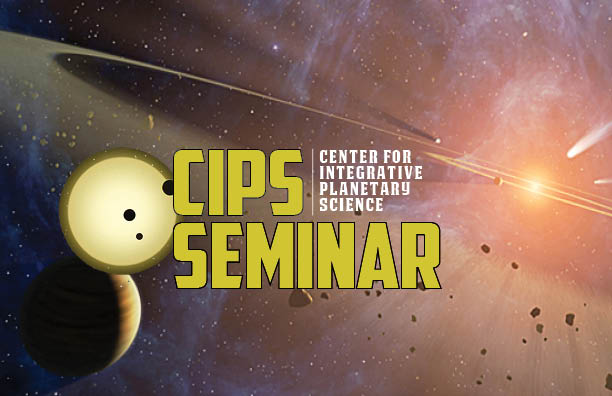CIPS Seminar 10-21
Wed, October 21, 2015

Eric Nielsen (SETI/Stanford) – "Mapping the Distributions of Exoplanet Populations from NICI to GPI"
Giant planets at intermediate semi-major axes (∼4-40 AU) have up to now been largely inaccessible to both radial velocity and previous direct imaging surveys, and so the architecture of planetary systems in these regimes has been mostly unknown. The Gemini Planet Imager Exoplanet Survey is one of the first campaigns with the necessary instrumentation and sample size required to reliably detect and characterize giant planets at these separations. Having observed 130 of the 600-star target list GPIES is already surpassing many previous surveys in terms of sensitivity to shorter-period and lower-luminosity planets and number of stars observed. I combine previous direct imaging surveys such as the Gemini NICI Planet-Finding Campaign with early results from GPI, and describe what limits can be placed on occurrence rate of large- and intermediate-separation giant planets based on the stars observed to date. I also discuss new analysis of the GPIES-discovered planet 51 Eri b, and show how new GPI astrometry confirm it is a bound planet showing orbital motion. Finally I'll present a new computationally efficient technique to derive probability distributions on orbital parameters for very short arcs of long-period planets in a fraction of the time required for traditional MCMC.
Michael Manga (UC Berkeley) – "Cryomagmatic and tectonic processes in Europa's ice shell"
Liquid water is more dense than ice so its eruption onto the surface of icy satellites, such as Europa, is not expected. I will described some mechanisms that might allow liquid water to erupt. If liquid does not reach the surface, if may be injected into the ice shell that encases these satellites. The surface of Europa is littered with quasi-elliptical features a few to a few tens of kilometers in diameter, that may be the product of intrusions of liquid water. I will compare model predictions with observations. If time permits, we will also examine tectonic features on Europa's surface. A long standing paradox is that we see evidence of extension of the surface but no corresponding contraction; mapping of the surface allows us to identify where the missing contraction is accommodated.
